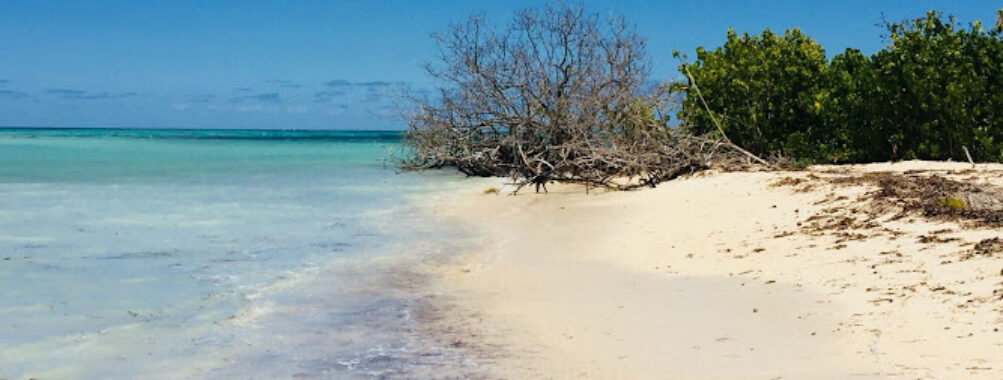
Grand Cul-de-sac marin
“`html
Table of Contents
Description
The Grand Cul-de-sac marin in Guadeloupe is one of those places that makes you stop and think, “Wow, nature really outdid itself here.” It’s a protected lagoon stretching over 15,000 hectares, tucked between Basse-Terre and Grande-Terre, and it feels like a world apart from the busier tourist spots. This bay is framed by the largest coral reef in the Lesser Antilles on one side and the longest mangrove belt in the region on the other. The combination creates a living, breathing ecosystem where you can spot everything from colorful parrotfish darting around coral gardens to herons quietly stalking the shallows. It’s not just beautiful—it’s alive in a way that feels rare and precious.
What makes the Grand Cul-de-sac marin stand out is its balance. On one hand, you’ve got calm, shallow waters that are perfect for snorkeling, kayaking, or just floating around with a mask and fins. On the other, you’ve got wild stretches of mangroves and islets like Caret and Fajou that feel untouched, almost secret. And I’ll be honest—there’s something about hopping off a boat onto a tiny white-sand islet in the middle of this lagoon that feels like stepping into a postcard. But it’s not just about the pretty views; this is a UNESCO Biosphere Reserve, which means its biodiversity is protected and respected. You can feel that sense of preservation when you’re there—it’s not just a playground, it’s a sanctuary.
Of course, no place is perfect. The waters can get crowded with boats at peak times, and if you’re looking for absolute solitude, you might have to plan carefully. Still, the overall experience is overwhelmingly positive. The bay is one of those rare places where you can both relax and learn something about the natural world. It’s the kind of destination that leaves you with salty hair, sandy toes, and a deeper appreciation for how delicate and interconnected marine ecosystems really are.
Key Features
- A vast lagoon covering around 15,000 hectares, bordered by coral reefs and mangroves
- Part of Guadeloupe National Park and designated a UNESCO Biosphere Reserve
- Home to hundreds of fish species, coral, sea turtles, and even dolphins
- Islets like Caret and Fajou with white sand beaches and crystal-clear waters
- Opportunities for snorkeling, scuba diving, kayaking, and boat tours
- Rich mangrove forests that act as nurseries for marine life
- Calm waters ideal for families and beginner snorkelers
Best Time to Visit
Timing really shapes the experience here. The dry season, roughly from December to May, is usually the sweet spot. You’ll get clearer skies, calmer seas, and better visibility for snorkeling or diving. The rainy season, from June through November, can bring heavier showers and the occasional storm, but it also means fewer crowds and a more peaceful atmosphere. Personally, I find the shoulder months—like late November or early June—just about perfect. You get good weather without the peak-season bustle. And if you’re into birdwatching, the mangroves are especially lively during the wetter months, so don’t rule that out either.
How to Get There
The Grand Cul-de-sac marin sits between the northern coast of Basse-Terre and the western edge of Grande-Terre. Most travelers reach it via boat tours that depart from towns like Sainte-Rose or Baie-Mahault. These tours usually include snorkeling stops, visits to the islets, and sometimes even a picnic on the sand. If you’re more independent, you can rent a kayak or join a guided paddle through the mangroves. It’s not the sort of place you just stumble upon by car—you really do need to get on the water to experience it properly. And honestly, that’s part of the magic: the journey is half the adventure.
Tips for Visiting
A few practical notes can make your visit smoother and more enjoyable. First, bring reef-safe sunscreen—this isn’t just about protecting your skin, it’s about respecting the fragile coral ecosystem. A rash guard or light long-sleeved shirt can be a lifesaver under the Caribbean sun too. If you’re prone to seasickness, consider motion sickness tablets, because even on calm days, the ride across the lagoon can get a little choppy.
Another tip: try to book a smaller group tour. I once joined a boat with just eight people, and it felt intimate and relaxed, compared to the larger boats that can feel like floating buses. Also, pack snacks and plenty of water, because once you’re out there, there aren’t exactly beach bars waiting for you.
And here’s a personal note—don’t rush. It’s tempting to try to see everything in one go, but the real joy of the Grand Cul-de-sac marin is slowing down and letting the place reveal itself. Watch the tiny crabs scuttle around the mangrove roots, listen to the rustle of the palms on Caret islet, or just float in the lagoon and let the current carry you. That’s when the magic really sinks in.
The Grand Cul-de-sac marin isn’t just another beach stop in Guadeloupe. It’s a living classroom, a playground for adventurers, and a sanctuary for wildlife. If you give it time and attention, it will reward you with memories that feel as rare and wild as the place itself.
“`
Location
Places to Stay Near Grand Cul-de-sac marin
Find and Book a Tour
Explore More Travel Guides
No reviews found! Be the first to review!